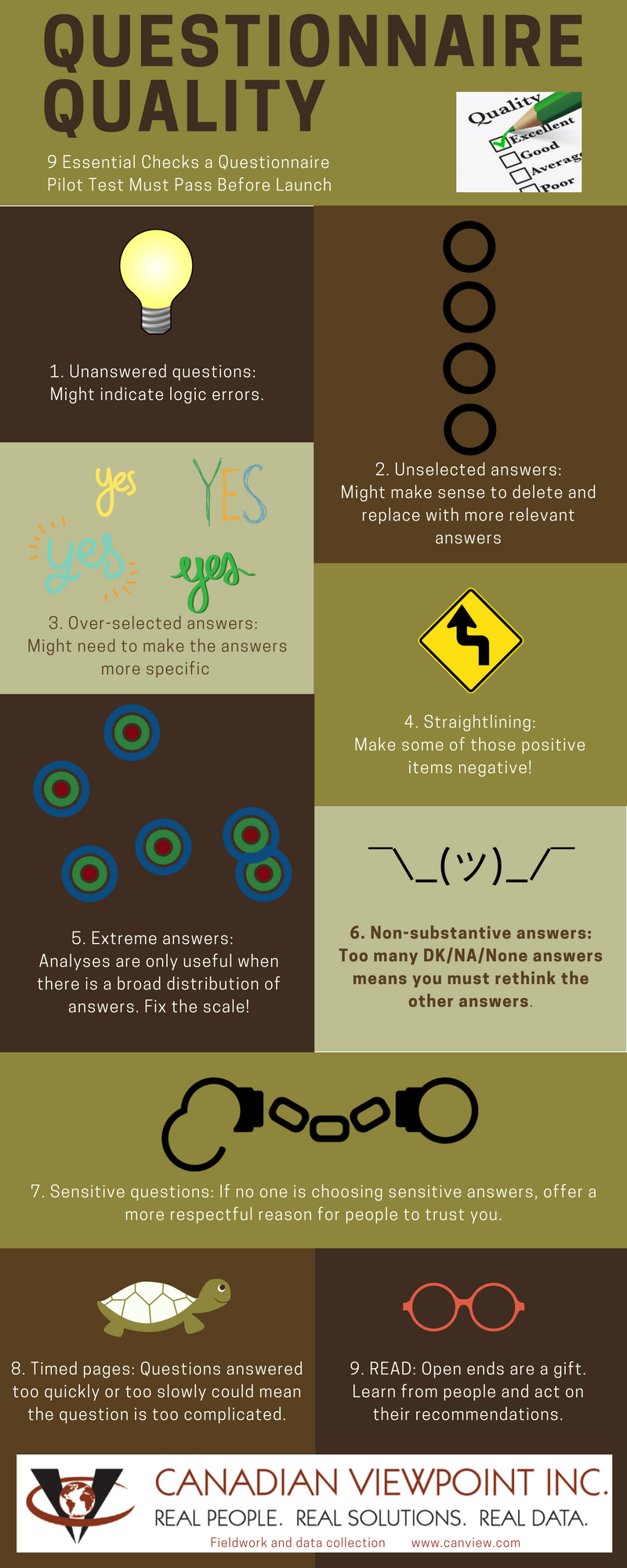By Sasha Haig
This article originally appeared on the Canadian Viewpoint blog.
Your colleague is conducting a face-to-face mall-intercept research project. You instantly know it’s qualitative research project. Or do you?
One of the tricky things about research is that knowing whether someone is conducting a study online, over the phone, or face to face does not immediately determine whether a study is qualitative or quantitative. So how you can tell?
What is quantitative research?
Quantitative research can be identified by its use of precise numbers. Lots of numbers and in many places. Sample sizes, percentages, rates, ranks, and decimal places. Plus statistical tests, cross-tabs, bar charts, line charts, and more.
These numbers can be gathered in many different ways. Most often, they’re gathered using standardized questionnaires over the computer. Sometimes though, standardized questionnaire are administered by people either in-person or over the phone. And, sometimes, questionnaires are administered by automated telephone call or other means.

But quantitative research is not the output of only questionnaires. Quantitative data can also be gathered via biometric measurements such as galvanic skin response, fMRIs, facial coding, or EEGs. And, quantitative data can be gathered from social media data or website tracking data. Wherever a plethora a numbers can be found, you’re very likely dealing with a quantitative study.
What is qualitative research?
The main feature of qualitative research is that numbers are (mostly and often) irrelevant. While the goal may be to collect opinions from 5 or 50 or 500 people, even that sample size number is not particularly relevant.
Instead, the important part of the research is gaining a thorough and in-depth understanding of a person or group of people. Qualitative research is traditionally conducted with focus groups or interviews, whether in-person, over the telephone, or even over the internet. However, qualitative data can be gathered from questionnaires. That what those open-ends are! And, even though it seems like you could talk about percentages or use decimal places, a true qualitative study will never do so, mainly because the sampling procedures used will not justify it.
The moral of the story is this. Just because you’ve got a face-to-face project doesn’t mean you’ve got a qualitative project.
You might like to read these:
- What products work well for the IHUT research methodology?
- Bigger is better and other myths about research panels
- What are the advantages of the IHUT research methodology?
Sasha Haig is an Account Manager at Canadian Viewpoint. She loves tackling the complex multi-modal studies while working collaboratively with clients to ensure their research objectives are met, and looking for new ways to approach data collection. In her free time, she likes hiking and sharing her unique tastes in cooking on her food blog.




